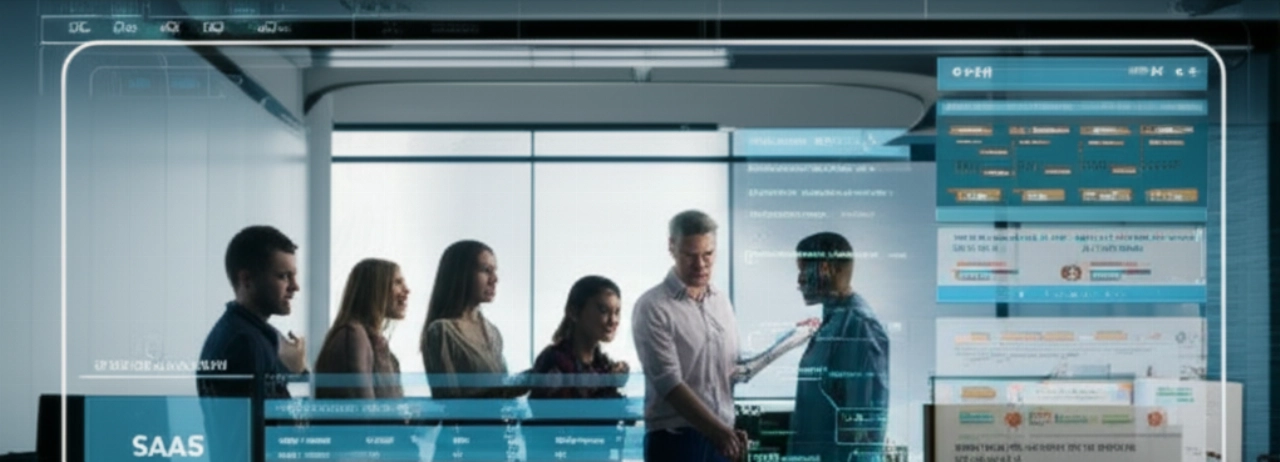The digital commerce landscape is a minefield of choices, each promising the ultimate solution. For enterprise-level businesses and B2B operations, this decision isn't just about selecting a shopping cart; it's about architecting the very foundation of your future growth. The perennial debate of SaaS vs. open source ecommerce platforms isn't merely technical—it's strategic, impacting everything from your ability to scale, integrate with critical systems, and innovate faster than your competition.
Are you grappling with a platform that buckles under peak traffic, leaving revenue on the table? Does the thought of integrating your ERP, PIM, or CRM systems send shivers down your spine, hinting at an operational nightmare? Or perhaps you're haunted by the specter of a failed migration, a multi-million dollar project that could derail your entire business?
At Commerce-K.com, we understand these deep-seated fears. This isn't just an article; it's your definitive roadmap. We will cut through the noise, providing the clarity and strategic framework you need to make an informed decision that transforms your digital commerce from a cost center into a powerful engine for unrestricted growth and competitive advantage. Stop navigating technical debt and start building a future-proof commerce ecosystem.

Beyond the Platform: Engineering Your Commerce Ecosystem for Unrestricted Growth
For enterprise, a commerce platform is not a standalone application; it's the central nervous system of your digital operations. Whether you lean towards SaaS vs. open source ecommerce, the ultimate goal must be to engineer an ecosystem that supports your unique business processes, not constrains them. This means looking beyond feature lists and focusing on true architectural flexibility, integration capabilities, and the ability to adapt to evolving market demands.
Consider your long-term vision. Are you aiming for global expansion? Do you require complex B2B pricing models, intricate product configurators, or highly specific workflow automations? Your platform choice dictates your agility. A strategic approach ensures your commerce engine becomes a competitive moat, allowing you to:
- Achieve Unprecedented Scalability: Handle exponential traffic and transaction growth without performance bottlenecks.
- Master Integration Complexity: Seamlessly connect with your existing ERP, CRM, PIM, WMS, and other mission-critical systems, eliminating data silos and manual processes.
- Drive Customization & Innovation: Implement unique features and workflows that differentiate your brand and serve your specific customer segments.
- Optimize Total Cost of Ownership (TCO): Understand the true long-term investment, factoring in not just licensing, but also development, maintenance, and operational efficiencies.
This isn't about choosing a vendor; it's about selecting a strategic partner who can help you architect this complex ecosystem, ensuring every component works in harmony to deliver measurable ROI.

The Hidden Costs of 'One-Size-Fits-All': Why SaaS Can Strangle Enterprise Ambition
SaaS platforms, with their promise of quick deployment and managed infrastructure, often appear attractive. For many businesses, they are a viable solution. However, for mid-market to enterprise-level B2B operations, the "one-size-fits-all" trap can quickly become a significant performance bottleneck and a source of crippling frustration. While seemingly offering a lower upfront cost, the true Total Cost of Ownership (TCO) can skyrocket due to:
- Limited Customization: Your unique business processes, complex pricing rules, or specialized product configurators often hit a wall with SaaS. Workarounds become costly, clunky, and unsustainable.
- Integration Hell: While many SaaS platforms offer integrations, they are often generic. Deep, bespoke ERP integration or complex data synchronization with legacy systems can be difficult, expensive, or even impossible, leading to manual data entry and operational inefficiencies.
- Vendor Lock-in: Migrating off a deeply embedded SaaS platform can be as complex and risky as moving from an on-premise solution. Your business becomes beholden to the vendor's roadmap, pricing, and feature set.
- Performance Bottlenecks: Shared infrastructure can lead to performance issues during peak periods, impacting conversion rates and customer experience. You have less control over the underlying architecture.
- Lack of Competitive Moat: If your competitors use the same SaaS platform, how do you truly differentiate your digital experience? Innovation is often limited to what the platform allows, not what your business demands.
For businesses where digital commerce is a core strategic pillar, relying solely on a generic SaaS solution can be akin to trying to fit a square peg into a round hole. It might work for a while, but it will inevitably lead to compromises that hinder growth and innovation.

Unlocking True Potential: When Open Source Becomes Your Strategic Advantage
Conversely, open source ecommerce platforms, when implemented and managed correctly, offer unparalleled flexibility and control, making them a powerful choice for enterprises seeking a genuine competitive advantage. This is where the true power of customization and scalability lies.
With open source, you gain:
- Unrestricted Customization: The ability to tailor every aspect of your platform to your exact business needs, from unique B2B workflows and complex pricing logic to bespoke customer experiences and advanced product configurators. This is where you build your competitive moat.
- Deep Integration Capabilities: Full control over the codebase allows for seamless, robust, and bi-directional API-first integrations with any internal or external system—your ERP, CRM, PIM, WMS, and even custom applications. This eliminates data silos and automates critical business processes.
- Future-Proof Architecture: The flexibility to adopt modern architectural patterns like composable commerce and MACH architecture (Microservices, API-first, Cloud-native, Headless). This means you can swap out components as technology evolves, avoiding costly replatforming every few years.
- Performance Optimization: Complete control over hosting infrastructure and code allows for granular performance tuning, ensuring your site remains lightning-fast even under immense traffic, directly impacting conversion rates and SEO.
- Community & Innovation: A vibrant global community contributes to continuous improvement and innovation, often at a faster pace than proprietary SaaS solutions.
However, this power comes with responsibility. Open source requires deep expertise in development, infrastructure, security, and ongoing maintenance. This is precisely where a strategic partner like Commerce-K becomes indispensable, transforming the complexity into a clear path to success.
The Multi-Million Dollar Migration: How Strategic Platform Choice Transformed a Global Distributor
A leading global industrial distributor, grappling with a legacy open-source platform that had become a significant performance bottleneck and an integration nightmare, approached Commerce-K. Their existing system was hindering their ability to scale into new markets and offer the sophisticated B2B purchasing experiences their clients demanded. The fear of a failed migration was palpable, given the multi-million dollar revenue at stake.
After a comprehensive strategic analysis, we recommended a modern, enterprise-grade open-source solution, leveraging a composable commerce approach. Our team meticulously planned and executed a phased migration, ensuring:
- Zero Downtime: A seamless transition with no disruption to their 24/7 global operations.
- Complete Data Integrity: All product, customer, order, and pricing data migrated flawlessly, preserving historical records and SEO rankings.
- Deep ERP & CRM Integration: We engineered robust, real-time integrations with their SAP ERP and Salesforce CRM, automating order processing, inventory updates, and customer service workflows.
- Custom B2B Functionality: Implemented advanced features like tiered pricing, custom catalogs per customer, complex quote management, and self-service portals, directly addressing their unique B2B needs.
The result? Within 12 months, the client saw a 35% increase in online revenue, a 20% reduction in operational costs due to automation, and a significant boost in customer satisfaction. Their new platform became a strategic asset, enabling them to launch new digital initiatives with unprecedented speed and confidence. This wasn't just a platform change; it was a business transformation, proving that the right saas vs open source ecommerce decision, executed by experts, unlocks exponential growth.
Beyond the Build: The Commerce-K Partnership for Enduring Success
Choosing between SaaS vs. open source ecommerce is just the first step. The real challenge lies in the execution—designing, building, integrating, and continually optimizing a complex digital commerce ecosystem. This is where Commerce-K distinguishes itself not as a vendor, but as your strategic technology partner.
We bring unparalleled experience and expertise in architecting and implementing enterprise-grade commerce solutions. Our approach is rooted in understanding your unique business objectives, pain points, and long-term vision. We don't just recommend a platform; we craft a bespoke solution that leverages the strengths of open source or strategically extends SaaS capabilities through API-first and headless commerce principles.
Our commitment extends beyond launch. We provide ongoing strategic guidance, performance optimization, and continuous innovation, ensuring your platform evolves with your business and market demands. We help you avoid the pitfalls of technical debt, mitigate the risks of complex integrations, and ensure your investment delivers maximum ROI and sustainable competitive advantage.
Frequently Asked Questions about SaaS vs Open Source Ecommerce
What is the true Total Cost of Ownership (TCO) for SaaS vs. Open Source?
While SaaS often has lower upfront costs (monthly subscriptions), its TCO can be higher in the long run due to limited customization, expensive add-ons for specific features, and potential vendor lock-in. Open source has higher initial development and infrastructure costs but offers greater control, flexibility, and often lower long-term costs for extensive customization and integration, provided you have expert development and maintenance partners.
How does platform choice impact my ERP and CRM integration strategy?
SaaS platforms typically offer pre-built connectors, but these can be rigid and may not support complex, bi-directional data flows or custom business logic required by enterprise ERPs (like SAP or Oracle) or CRMs (like Salesforce). Open source platforms, with their accessible codebases and API-first capabilities, allow for highly customized, robust, and real-time integrations, crucial for automating complex B2B workflows and ensuring data consistency across your entire tech stack.
Can an open-source platform truly offer the security and reliability of SaaS?
Absolutely. Enterprise-grade open-source platforms (e.g., Magento Open Source, Sylius) are inherently secure due to their transparent codebases, which allow for rapid identification and patching of vulnerabilities by a global community. When hosted on robust cloud infrastructure (AWS, Azure, GCP) and managed by expert partners like Commerce-K who implement best-in-class security protocols, regular updates, and proactive monitoring, they can exceed the security and reliability of many SaaS offerings. The key is expert implementation and ongoing management.
What are the risks of a failed migration when switching platforms?
The risks are substantial: data loss, SEO ranking drops, extended downtime, budget overruns, and operational disruption. A failed migration can severely impact revenue and customer trust. Mitigating these risks requires meticulous planning, comprehensive data mapping, robust testing, a phased deployment strategy, and deep expertise in both the source and target platforms. A strategic partner focuses on de-risking the entire process, treating it as an opportunity for growth, not just a technical challenge.
How long does an enterprise-level platform implementation typically take?
Timelines vary significantly based on complexity, required customizations, and integration scope. A basic enterprise SaaS implementation might take 3-6 months, but deep customizations or complex integrations can extend this. A comprehensive open-source implementation, especially one leveraging composable commerce or MACH architecture, typically ranges from 6-18 months. The focus should always be on a strategic, well-executed project that delivers long-term value, rather than rushing to an arbitrary deadline.
The decision between SaaS vs. open source ecommerce is not a binary choice, but a strategic imperative that will define your digital commerce trajectory for years to come. This article has illuminated the critical factors, from scalability and integration to customization and TCO, empowering you with the knowledge to navigate this complex landscape.
You might be thinking: "This sounds incredibly complex," or "Do we have the internal resources for such a strategic undertaking?" These are valid concerns. The truth is, you don't have to navigate this alone. The biggest mistake is to treat your commerce platform as a mere IT project rather than a core business investment.
Stop navigating technical debt and platform limitations. Your business deserves a clear digital commerce roadmap that delivers measurable results and unlocks unrestricted growth. The first step isn't a quote; it's a no-obligation Scoping & Strategy Session with our senior architects. We'll help you map your potential, de-risk your investment, and identify the opportunities you're currently missing.
Click here, tell us about your project, and discover how to build your future-proof commerce engine today.
Now that you understand the strategic implications of platform choice, explore how we ensure a seamless ecommerce migration service or delve deeper into the power of headless commerce agency solutions for ultimate flexibility.





